Ginger is an Asian plant with worldwide popularity and a unique chemical composition. However, despite the popularity of the root, it is rarely grown indoors, fearing that ginger does not grow well at home and it will take a lot of time and effort to grow it. But in fact, it is quite unpretentious and resistant to various diseases and pests.
Content
Characteristics of indoor ginger
Ginger is a member of the Ginger family, originally native to the tropical forests of South Asia. In its external characteristics, ginger is similar to tall wild-growing grass or river reeds. Despite the worldwide popularity of the rhizome culture, not many people recognize the plant by its appearance, because most people are only familiar with the root. Such a popular spice - ginger root - is actually an underground shoot whose shape quite often resembles a human palm with shortened or twisted phalanges.
The flower has a false erect stem up to 100 cm high. A high stalk is formed by alternately arranged green lanceolate leaves with solid edges and a sharp apex. Heart-shaped sheet plates are twisted into a tube.
On short peduncles of the plant there are spike-shaped inflorescences, consisting of zygomorphic flowers of red-purple hues. The green cup of the flower consists of five fused sepals. The fruit of the plant is a tricuspid box with seeds. Each part of ginger exudes a pleasant citrus aroma and is edible.
Growing ginger from the root at home
With the right choice of planting material, growing ginger in a pot is quite simple.
Root selection
You can buy the rhizome of the plant at the grocery store or supermarket. The root should be healthy and juicy in appearance. The suitability of the root for planting can be determined by its smooth surface, without damage or traces of the activity of insects.
Dry root is also not suitable for rooting. An important criterion for the selection of a viable root is the presence of lateral buds on its surface, which look like eyes on potatoes.
Training
After buying the root, it is not recommended to immediately plant it in the ground, since its lateral buds are at rest. Warm water will awaken and stimulate the ginger eyes to further shoot growth. For awakening, it is enough to place the planting material in warm water for several hours. Such a manipulation can also reanimate a slightly dried or sluggish root.
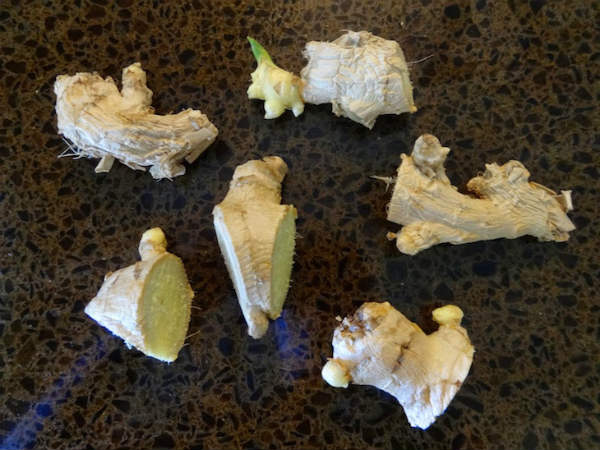
The cut root of the plant is planted in the ground. According to the recommendations of gardeners, the root must be cut into jumpers. In order to disinfect the places of cuts, it is necessary to treat with charcoal or a slightly pink solution of potassium permanganate.
Landing
The roots of the plant are actively expanding in breadth, therefore, for their full development, tanks with a wide bottom are needed. However, when growing a flower for decorative purposes, it is necessary to choose containers with a narrow bottom. This restriction is an incentive for the formation of inflorescences.
Stages of planting a root in the ground:
- Put 3-4 cm of drainage layer on the bottom of the pot. For drainage, pebbles, expanded clay, fine gravel or brick chips can be used.
- On top of the drainage layer, sprinkle a mixture of turf soil, sand and deciduous humus, taken in equal proportions. Complex fertilizers designed specifically for root crops can also be added to the ground.
- Moisten the soil.
- Put pieces of rhizome on the ground, eyes up.
- Gently push the underground shoots into the soil so that the growth points (buds) rise above the surface of the earth.
- Pour the plant with warm water.
If all the recommendations are followed, the appearance of the first shoots can already be expected 14 days after planting. You can plant roots in the soil at any time of the year, but flower growers recommend doing this in the second half of February, in order to get seedlings in the spring.
Growing Ginger from Potted Seeds
It is quite difficult to grow a plant from seeds, it takes not only a lot of time, but also strength. For this reason, this method of cultivation is rarely used, preferring propagation by dividing the rhizome. In addition, the grown ginger in the room does not produce seeds, so they can be purchased only in a specialized store.
For sowing seeds, it is necessary to prepare a shallow container with a wide bottom and fill it with light and loose soil mixed with humus. Seeds are sown in moist soil at a distance of 3 to 5 cm from each other. Then the seeds are sprinkled with a thin layer of soil and covered with polyethylene with small holes.
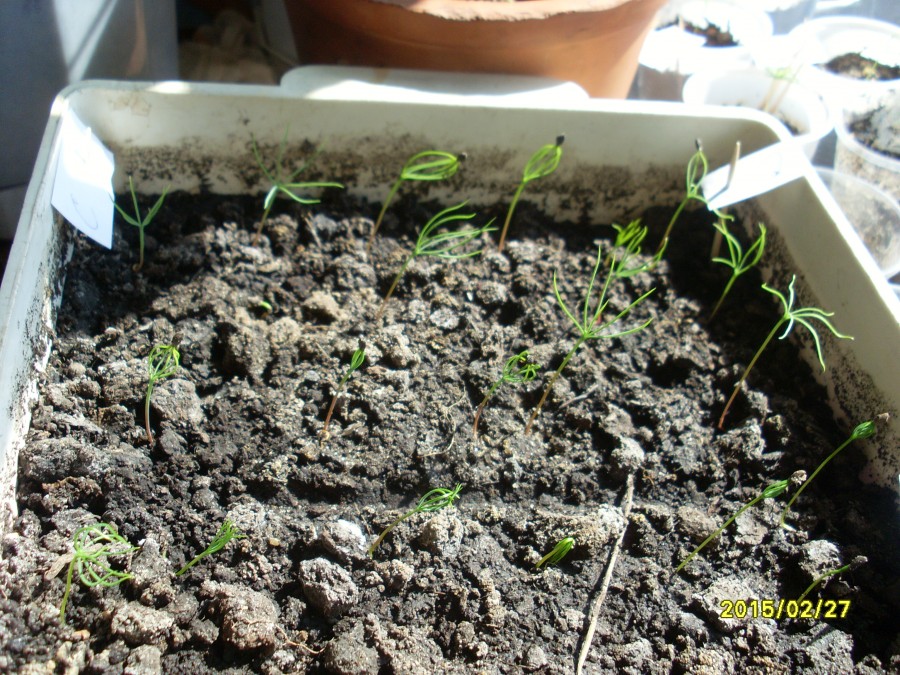
The presence of holes provides good air exchange. Seedlings must be periodically ventilated by removing polyethylene. It is recommended to moisten the soil from the spray, in order to avoid rotting of the seeds.
With proper care, the first shoots appear in 2-4 weeks. After the emergence of sprouts, the need for shelter disappears. Care for sprouts includes only periodic moistening and loosening of the soil. Strong sprouts can be planted in pots.
Home Care
Growing a flower indoors has its own nuances and difficulties, which are worth getting acquainted with, otherwise it is unlikely to grow beautiful and healthy ginger.
Priming
It is necessary to choose loose, light and fertile land. It is difficult for the plant to grow in dense soil; moreover, such soil does not allow air to pass through well, which can lead to root decay. You can use the soil for ornamental crops with the addition of a large amount of fertilizer for root crops. A mixture of sand, turf soil and humus from fallen leaves is also suitable for growing a flower.
Lighting, temperature and humidity
Ginger grows well in bright diffused lighting or in partial shade. Like most plants, it does not tolerate direct UV rays. Ginger's natural habitat is tropical forests, so the plant should be kept in a warm climate with high humidity. In summer, the flower must be kept at a temperature of 28 to 32 ° C.
Winter temperature conditions depend on whether the flower will be in dormancy mode or not. A plant in a dormant stage must be kept at a temperature of 10 to 15 degrees. If the flower will be grown in the standard mode, then the temperature at the place of its content should be in the range of 18-20 ° C.
Watering and feeding
It is necessary to water the plant regularly and abundantly, especially if it is in the stage of active growth or the formation of peduncles. However, pouring ginger is not worth it, an excess of moisture will lead to rotting of the roots. The soil in which the flower grows should always be slightly moist, but moisture must not be allowed to stagnate in the ground or in the pallet. Loosening the soil after each irrigation will avoid stagnation of liquid in the soil.
3-4 weeks before the withering of the terrestrial part of the flower, which occurs at the end of summer, the frequency of watering should be minimized. Reducing watering will give an impetus to the increase in root mass.
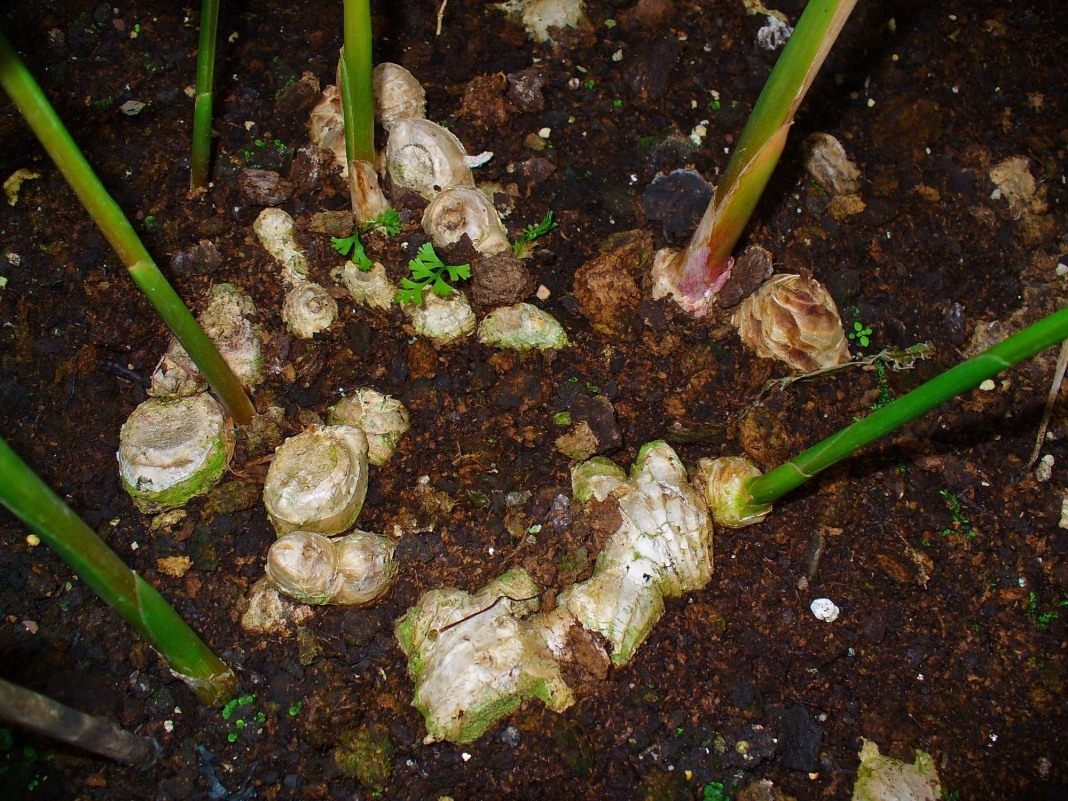
From early spring until the foliage withers, the flower needs additional fertilizing once every 14 days. As a top dressing, it is recommended to use organic and mineral fertilizers with potassium, phosphorus and nitrogen alternately.
Bloom
Indoors, ginger blooms reluctantly, but if you provide the plant with proper care, you will still be able to enjoy its flowering. However, it is not worth expecting ginger to bloom in the first year after planting, since only adult specimens bloom over 3 years old.
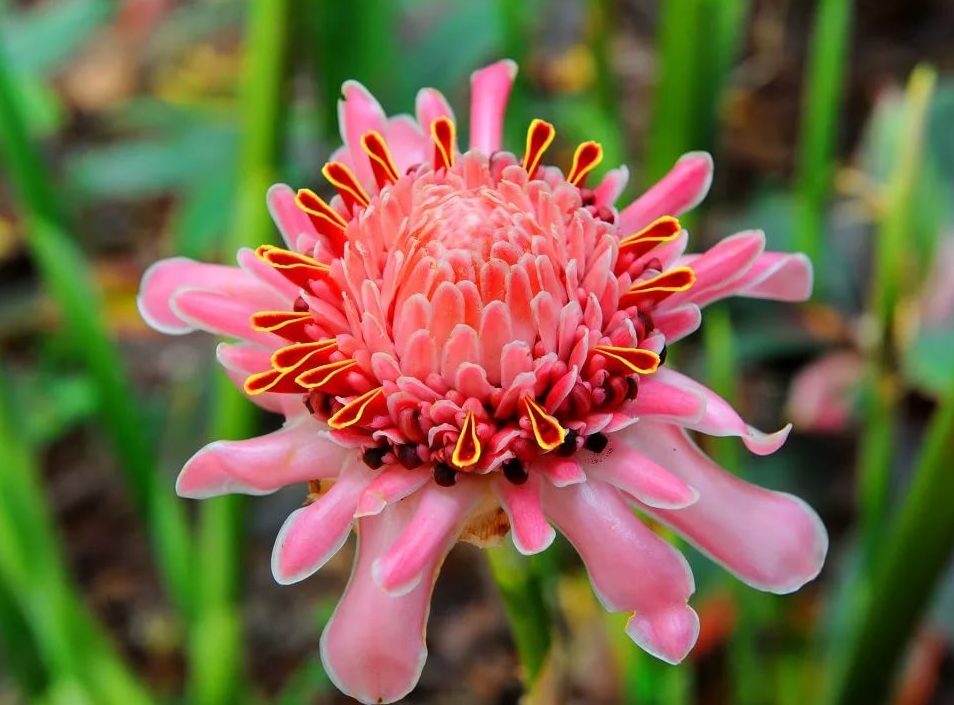
When growing a flower for decorative purposes, it must be planted in a small pot, since a narrow container slows down the development of its root system and stimulates flowering. Decorative culture is also not recommended for replanting for 3 years after the first planting. In order for a plant to bloom, it must be kept in a warm, almost hot room with high humidity.
Pruning
To prune ginger is worth it only if the purpose of its cultivation is to obtain its useful rhizome. Periodic thinning of the leaves will allow the flower to direct most of its forces to the growth and development of the underground shoot.
Preparation for winter
It is only necessary to prepare for winter ginger, which is grown as a decorative culture. Preparing for cold weather involves removing wilted ground and moving the pot into a room with an air temperature in the range of 10 to 15 ° C. The flower, which is in hibernation, needs to be moistened periodically to avoid deep drying of the earthen substrate.
Disease and treatment
Ginger is resistant to various diseases and pests, however, adverse conditions of detention significantly reduce its protective function. Dry air in the room where the flower is contained causes a spider mite to appear on the plant.
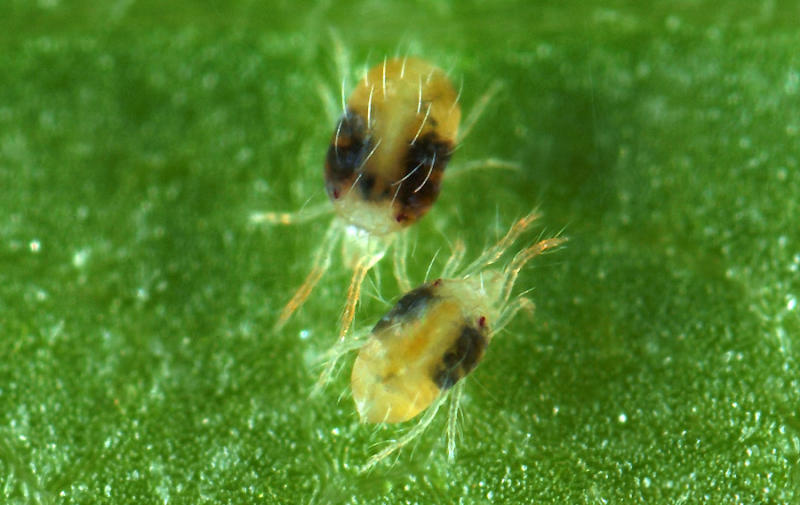
The insect leaves behind a thin cobweb-like filament, which is easy to notice at the time of spraying the foliage. As a result of the parasite's vital activity, ginger turns pale, and dots appear on its leaves, which later turn into large yellow spots. Treating the flower with insecticides will help get rid of the parasite.
Common Growing Questions
Ginger began to be grown at home not so long ago, for this reason many flower growers often ask questions regarding the nuances of caring for a flower indoors.
Ginger is not only useful, it can be grown indoors as an ornamental plant and delight with a pleasant lemon aroma or even flowering. It will be a great addition to any collection of flowers.

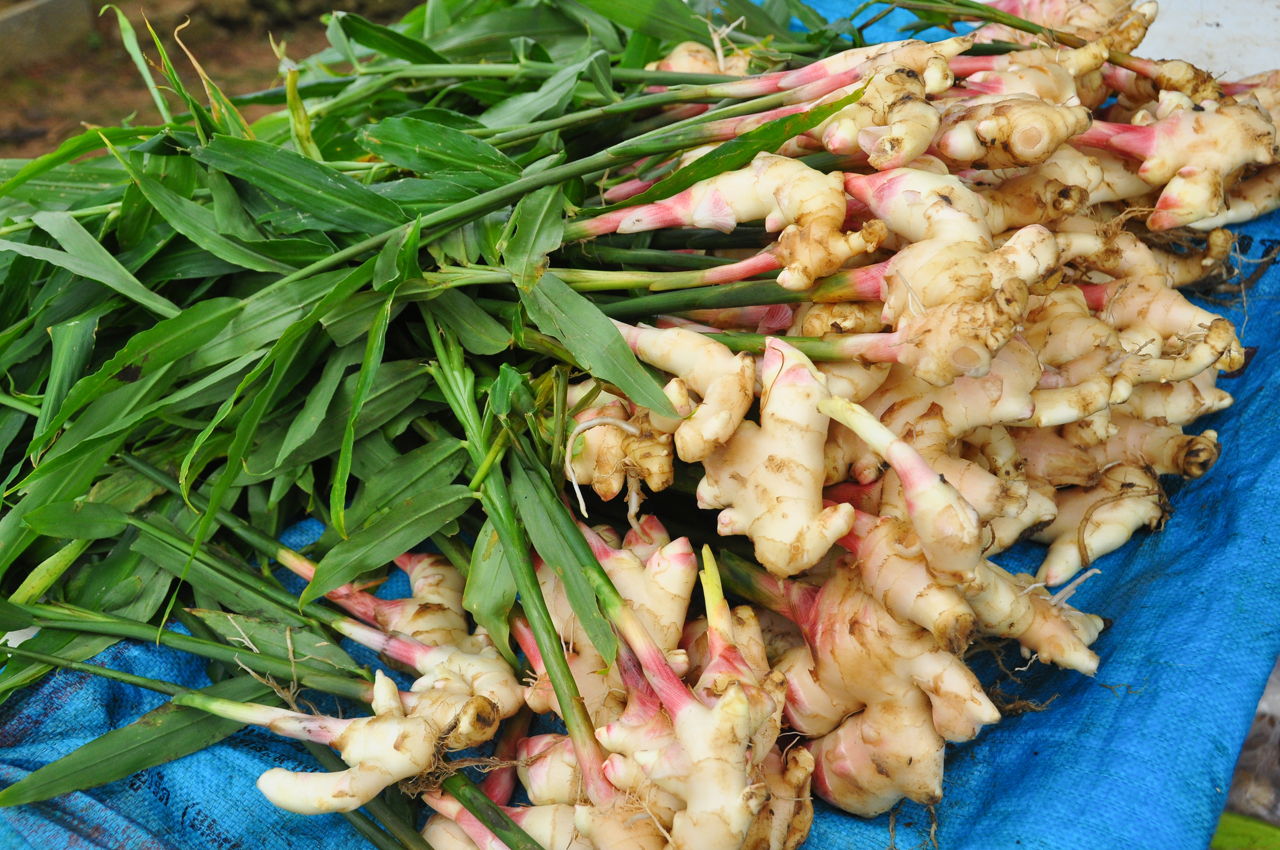

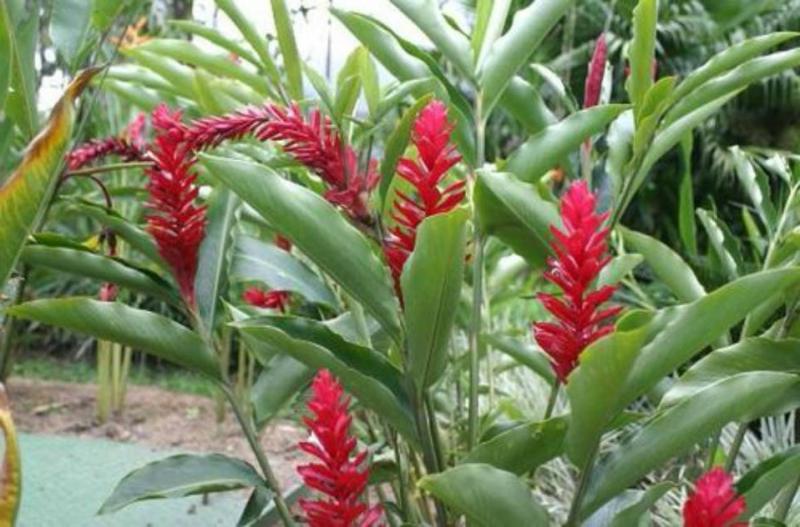
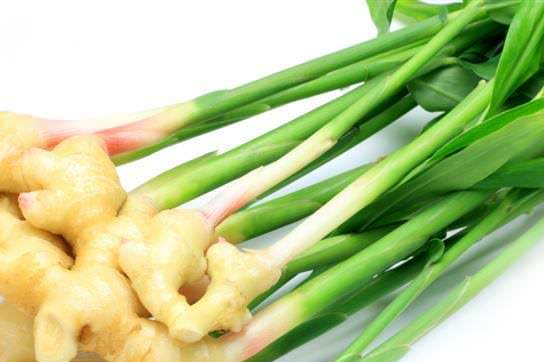
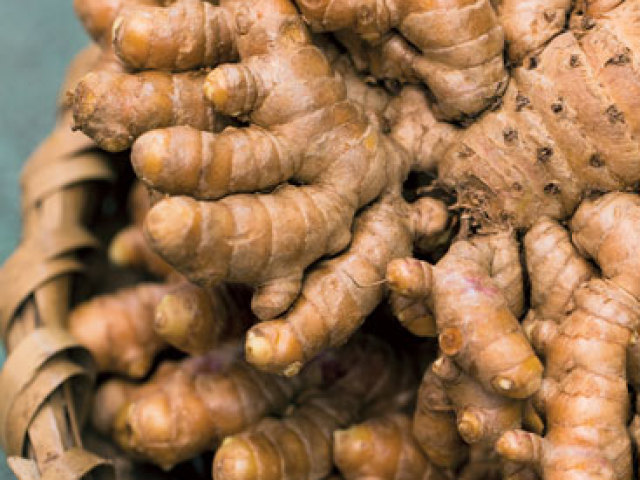
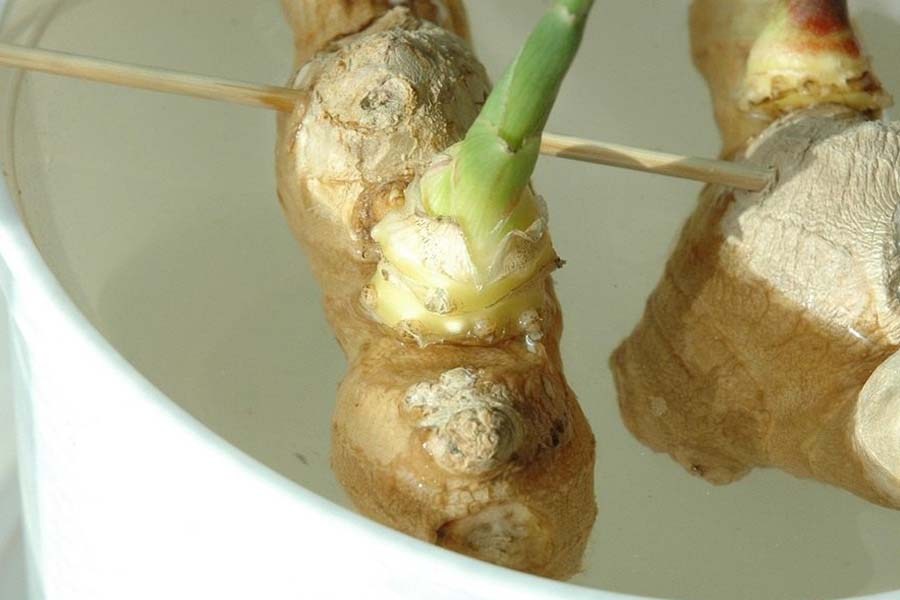
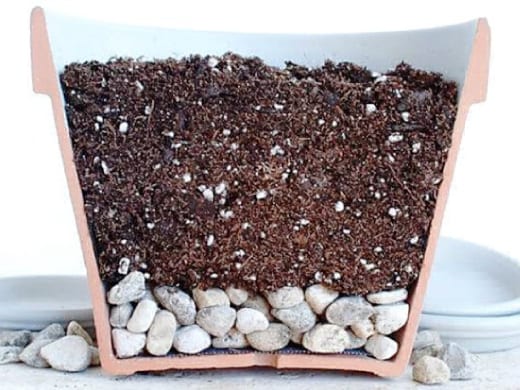
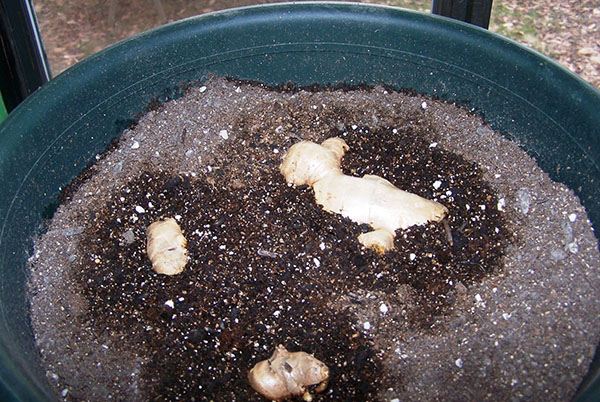




 Sow in the ground, without seedlings: 10 beautiful and unpretentious flowers
Sow in the ground, without seedlings: 10 beautiful and unpretentious flowers Platicodon planting and outdoor care
Platicodon planting and outdoor care Hosta - planting and care in the open ground in the Urals
Hosta - planting and care in the open ground in the Urals Oleander - care and growing at home
Oleander - care and growing at home